Nearly everyone has heard and most probably found inspiration in the famous lyrics “When you wish upon a star makes no difference who you are, anything your heart desires will come to you.” A famous opening line to the leading song to 1940 Disney classic Pinocchio, a young Floyd Norman took these words to heart, going on to become one of the more recognized animators of our time. An animation artist, from the 1950s to present day, Norman has a resume that is quite impressive. From working on 1967’s The Jungle Book with Walt Disney himself to 1996’s The Hunchback of Notre Dame and 1998’s Mulan, one can go on and on reviewing his credits as an artist.
A legend in the world of Disney animation, his reach goes even further, from work with Hanna-Barbera and Ruby-Spears, among others; this includes everything from his work on favorites such The Smurfs and and Snorks in the 1980s. Justifiably the recipient of many awards, including an induction into the Black Filmmakers Hall of Fame in 1979, Norman recently took the time to reflect on his works, discuss his time with the Disney Company, appearing in the new documentary film Mickey: The Story of a Mouse, plus more.
Cryptic Rock – You have been involved in animation for quite a long time. Very accomplished and successful, you have been a part of a lot of many fantastic projects through the years. Briefly tell us, how would you describe your incredible journey as an animation artist?
Floyd Norman – Well, that’s a good question. I don’t think my journey is any more incredible than some of my colleagues. I’ve gotten to know some of my fellow animators better when I had the opportunity to listen to a number of interviews they gave in years past. I realized that all of us share the same thing; we were all youngsters with a dream and desire to one day work for Walt Disney. We wanted to tell stories and we wanted to make movies. All of us had this crazy kid dream of coming to Disney, making movies, being storytellers, and being animators. All of us were kind of on the same path. We didn’t know each other back then, but who knew one day we would all come together at the Walt Disney Studio and collaborate on some amazing motion pictures.
I think my path was probably not all that different from a lot of young men and women who had a desire. I don’t know why, maybe it’s a crazy idea why we had this dream of becoming animators and animation storytellers, but we all seem to share that same passion. So, I don’t see myself as being all that unique, because there are so many men and women who are just like me.

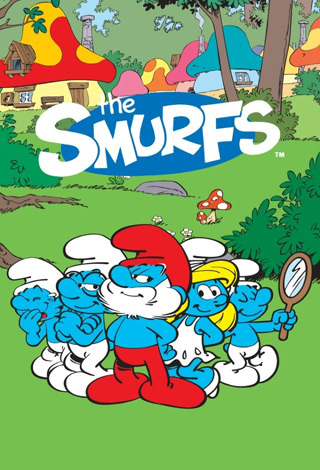
Cryptic Rock – Very humble of you to say, but you certainly have accomplished a great deal. Beyond Disney you have worked for other animation studios as well; Hanna-Barbera, Ruby-Spears, etc. Art is art, but how would you compare the different styles of animation you have worked on?
Floyd Norman – With animation, you can’t just limit it to one studio. One of the things I loved doing when I worked with Disney back in the ’50s and 60’s was take the opportunity to visit other cartoon studios in the area. Keep in mind back in those days pretty much everything was located in Hollywood or South California. I would visit other studios, because yes, they weren’t Disney and they were doing different things, but it was all animation and we were all pretty much working the same way.
I wouldn’t call it an art competition, because I never viewed us as competitors, but I loved seeing what the other studios were doing. I loved to see what stories they were telling, what techniques they were using, what we would learn from them, and what they could learn from us. It was sharing and a marvelous animated collaboration where all of us animated filmmakers would come together and share what we had learned.
One of the cool things about being in animation during that time is if you wanted to visit another studio, you didn’t need to make an appointment, you didn’t need to go past security, there was no security. All you had to do was walk in the door, say you were an animator, say you wanted to have a look around, and you were welcomed in… that’s how small the industry was. Everybody knew each other. We were such a tiny industry in motion pictures that everybody pretty much knew everybody else.
It was a marvelous time to be in animation. But again, I think we still share today in a different way. I see what others are doing because we have this marvelous new thing called the internet. Now we have access to so much more material today; I can go online and see all kinds of animation from literally all over the world. I’m in a very exciting business. It was exciting back in the ’50s when I came into it and it looks like it’s going to have a very exciting future. Creating and innovating is not over yet.
Cryptic Rock – Most certainly. In your career you actually ended up back working with Disney. Did you feel like you were going home when you returned to Disney?
Floyd Norman – (Laughs) I guess I’ve been in and out of Disney over the years, although I have probably spent the majority of my career at the Disney studio. There were times I would leave though, and oftentimes there was a good reason for leaving. My first departure from Disney was after Walt passed away, it just seemed like a natural time to step away. It wasn’t that I was in any disagreement or didn’t feel I had a future at Disney, but it was time to step away and try my hand at other things. One of those challenges was seeing if I could run my own company, so I did that for a while. I worked on television commercials too because I hadn’t done a good deal of that. I also worked on other TV shows; of course, Saturday Morning Television was a big factor in the ’70s because so many studios were producing content for Saturday morning TV. I did a bit of that for seven years at Hanna-Barbera. It is not the same as Disney, it was a different process with less time, less money, but it was still an opportunity to learn another process, and I think that was a real benefit.
Eventually I returned to Disney, because after all, that is where my heart was. Of course, you do your best work at a studio that has a legacy, and of course, tremendous resources. I think I did my best work at the Walt Disney Studios.
Cryptic Rock – Interesting, and it is hard to argue that considering your credits with Disney. You are featured in a new documentary called Mickey: The Story of a Mouse. Released on Friday, November 18th, how did this come about for you?
Floyd Norman – It’s not unusual where filmmakers will sometimes approach me about doing an interview. It is usually sitting down for one session – five or ten minutes – and you’re done, it’s over. In the case of this film, I approached it the same way; I thought it would be one five-minute interview, and I would be done with it. However, in this case, it went on and on and on. (Laughs) I found myself really part of the team on a project that seemed like it had more to it than I ever had expected.
I thought this was going to be a brief, casual look at Mickey Mouse. Instead of that it was a deep dive into the history of Mickey and into the legacy of Disney. It proved to be a good deal more than what I had initially expected. It was great to work with the filmmakers, to be a part of this project, and do a lot of things. We filmed a lot of things also that did not end up on screen, as often happens in the making of a film; a lot of stuff ends up on the cutting room floor. It was great to be a part of it and I’m so glad they approached me about being a part of telling this marvelous story of Mickey Mouse.
Cryptic Rock – It certainly is a deep look into Mickey Mouse and Disney. It is more than that though, it also is a social commentary about how we have changed as a culture through the decades and how Mickey Mouse has changed with us. That in mind, have you seen the final cut of the documentary?
Floyd Norman – Yes, I have. It does a wonderful job of telling us all about Mickey, who he is, and why he is who he is. It’s a fascinating bit of discovery even for me, and I’ve been around Mickey all my life. I learned a few things from this film.
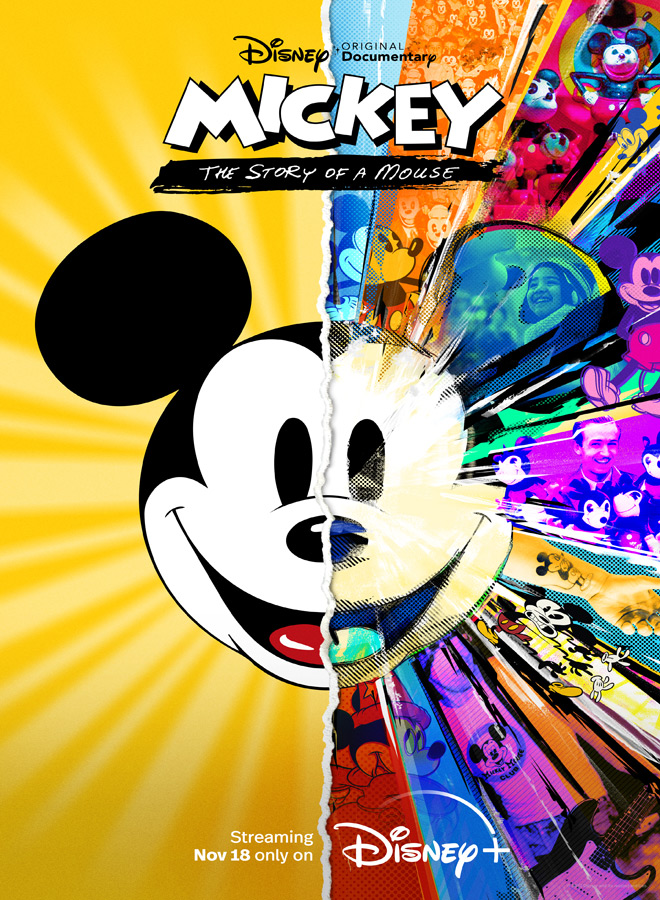
Cryptic Rock – You learn a lot as a viewer as well. It is great how it starts at the beginning and chronically follows through to the present day. It will be especially great for younger generations to watch. In a way, over the years Mickey has become sort of a corporate symbol for Disney. However, this film gives you the full picture and shows you, especially for younger generations who might not realize it, Mickey Mouse is much more. He is much more than just the symbol for the Disney company.
Floyd Norman – That’s very true. Mickey is so many things today. He’s on cruise ships, he’s the company mascot, he’s a greeter at Disneyland, he’s a film and TV star. Mickey is everything and he’s everywhere. Yet we seem to have no difficulty pulling all these various Mickeys together. We still recognize the one mouse, even though there are many iterations, it all goes back to Mickey Mouse, and we know who he is.
Cryptic Rock – Exactly. This is a very well-down documentary and it is recommended people sit down to watch it.
Working at Disney you have done short cartoons, but you have done a lot of features too; The Hunchback of Notre Dame (1996), Mulan (1998), etc. How would you compare working on an animated feature opposed to a short? One can imagine it is a very arduous undertaking to work on an animated feature. It is not like just saying ‘action’ as a director and shooting… you are actually creating everything we see on screens.
Floyd Norman – Yes, making a short cartoon is kind of like a sprint, where making an animated feature film is like a marathon. (Laughs) Boy, you can become exhausted along the way. So much of doing a feature film is hanging in there; there are going to be trying times and ups and downs. However, once the final result is realized, you may have something wonderful at the end of this whole arduous process. I enjoy both though.
I love the fact when you work on a short it’s over quickly and I’m happy about that. I also love the challenge of a feature film because it is much tougher to pull together. To try and engage an audience for over an hour is a task that every filmmaker has to face. It’s an enjoyable task though and I’m delighted to have been a part of it for so many years at the Walt Disney Studios.
Cryptic Rock – And you are still working with Disney. As an artist, you can never stop creating. So, are you working on any new animation?
Floyd Norman – Yes, I am. I’m currently working on something right now. It is something I can’t talk about at this time, but I continue to be involved in Disney animation and I’m delighted to do so.

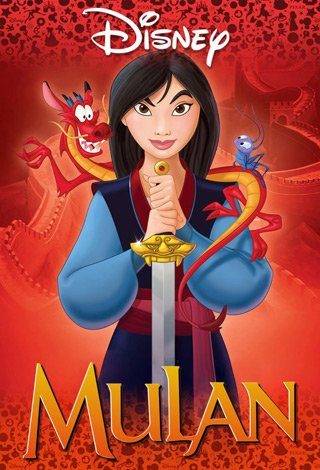
Cryptic Rock – That is something to look forward to in the future. It must be difficult to pick a favorite project since they are all your works of art, but do you have a favorite film that you have worked on?
Floyd Norman – Oh my every motion picture and project I’ve been on had good parts and challenges. I loved working on Toy Story 2 (1999) up at Pixar. I loved working on The Hunchback of Notre Dame. I also loved working on Mulan which turned out to be a quite remarkable film. However, I would have to say if I had to choose one single film, it would have to be The Jungle Book (1967). That is because back in 1966 I was able to spend a year with Walt Disney. That was the only time and film where I actually worked with Walt Disney, and that makes that motion picture very, very special.
Cryptic Rock – Wow, that sounds like an amazing experience. We have been talking about some of your projects, but what is most compelling about your career is your work transcends time. You have created cartoons that children grew up with in ’50s, ’60s, ’70s, ’80s, and beyond. For example, a child of the ’80s can connect with your work on The Smurfs or something like Snorks. Do you find different generations approaching you about the works you have done?
Floyd Norman – Very true. A matter of fact it takes different generations to remind me of what I have done. Oftentimes someone will come up to me and tell me how much he or she will like a particular show; a show I had long since forgotten I had worked on, but they remember. They will say, “Yea, you worked on this show back in 1960 or 1970.” They will remember stuff I had forgotten, and that is rewarding to know that my work is not forgotten. It is nice to know that somewhere out there that there is a dedicated fan who likes the work I have done.
Cryptic Rock – There absolutely are. You were the subject of a documentary called Floyd Norman: An Animated Life back in 2016. That has to be a humbling experience. What was that like for you?
Floyd Norman – It was a fun experience. Keep in mind when they are making a documentary about you, so you don’t have to do the work, the filmmakers are doing the work. They are making the film, all I had to do was show up. As a filmmaker myself I know I wouldn’t want someone breathing over my shoulder. I told the filmmakers, “I’m not going to bother you, I’m not going to be an annoyance. You guys make your movie. You tell your story; I will not interfere. I will be here when you need me to provide any insight that is helpful, but other than that, I’m just going to show up.”
They let the cameras follow me around, and being a filmmaker, I’m not bothered by cameras or wearing a microphone; to me that’s just second nature, so it was not a bother. It was a joy if anything and a fun experience. Like I said, I didn’t have to make the movie, all I had to do was appear in it… that’s the easy part. (Laughs)

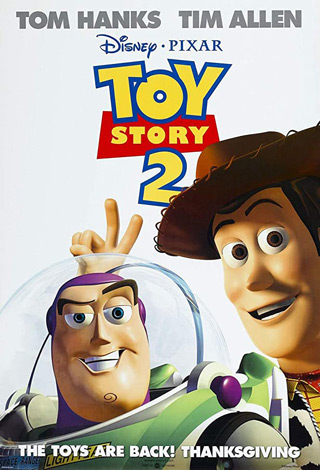
Cryptic Rock – (Laughs) Right. One last question. What are some of your personal favorite animated films?
Floyd Norman – Oh personal favorites good heavens… what a list that could be! I always tell people if I had to choose a favorite Walt Disney film, it would have to be hands down, Pinocchio (1940). I think Pinocchio is one of the greatest animated films ever made. Everything came together with the making of that film. It’s a remarkable job of storytelling, great art direction, and great songs. The music by Leigh Harline and Ned Washington is great. That song, “When You Wish Upon a Star,” became a theme for Disney. That song is all about Disney, it’s all about dreams, hope, and of a positive future.
There are so many films that could be listed, but my hands down favorite, the one I remember seeing as a child, and still captivates me to this day, is Walt Disney’s Pinocchio. It is just a gorgeous animated film.

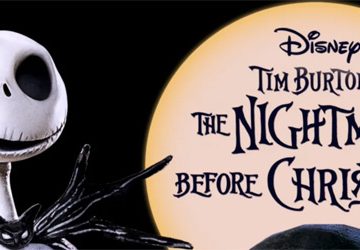
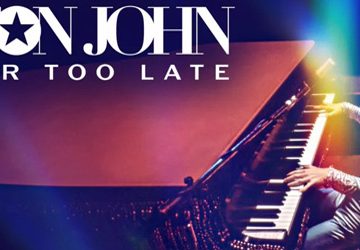


No comment